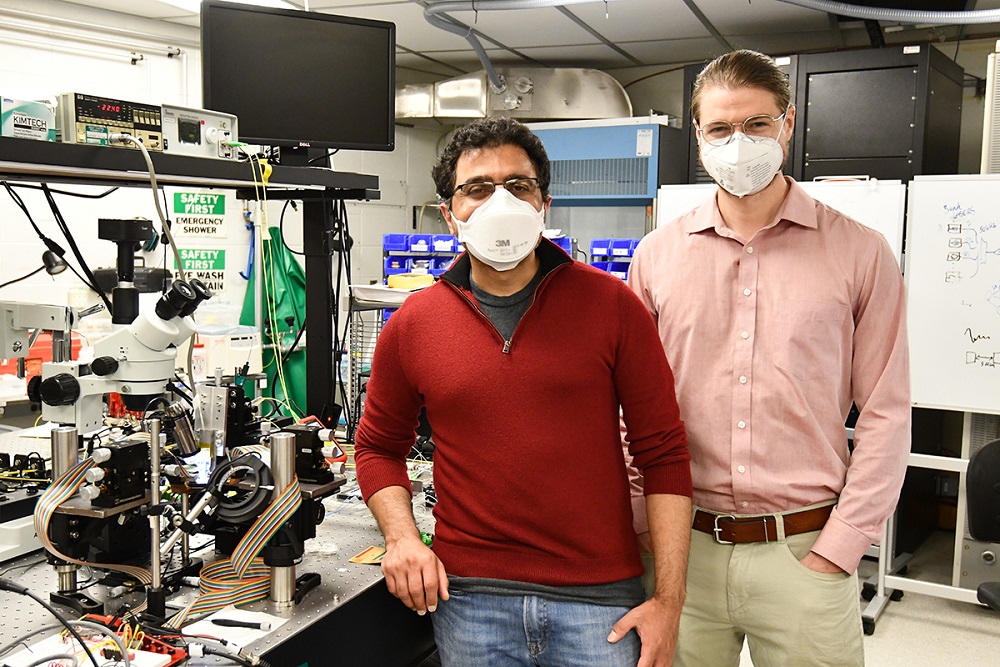While electronics are an excellent solution for many of our computing needs, they are not ideal for addressing challenges like advancing artificial intelligence or machine learning capacity. That is why the human brain has surfaced, once again, as an inspiration for computing.
The idea that the human brain, the most impressive machine ever known, could inspire the development of computers is not new. In fact, the concept of artificial networks inspired by neurons, the central units that make up the brain, first surfaced in the 1950s. But the last decade has seen a resurgence of research programs looking at building neuromorphic computing with the help of a new ally: photonics.
Computers are traditionally built as electronic devices, relying on transistors to communicate information – roughly, a transistor works like a switch that can be on or off, and a specific sequence of commands tells the computer what to do. This digital system is very efficient in performing several tasks, and over the years, we’ve developed better, faster, and smaller transistors to power our computers.
“We have realized that our brains are very good computers, but they do not operate with transistor-like switches. The brain uses a very different computing model,” explains Bhavin Shastri, assistant professor of in the Department of Physics, Engineering Physics, and Astronomy and a pioneer in the emerging field of neuromorphic photonics. “Our brain does not operate with ones and zeros, but with analog, continuous signals.”

Because electronics cannot provide a good model for analog systems, scientists started looking at photonics, a field that investigates how to use light – instead of electricity – to send and process information.
“Light behaves very differently from electrons, and in some cases, those are advantageous behaviors for certain applications,” says Alex Tait, assistant professor in the Department of Electrical and Computer Engineering. “For instance, in communications, fibre optic cables replaced electronic wiring because light is just more effective: it can communicate more information per second.”
For over a decade, Shastri and Tait have been collaborating on research that looks at how photonics can benefit neuromorphic computing. After doing proofs of concept, fabricating, and demonstrating devices, they are now working on how to build this knowledge into an actual, usable computer.
The distributed, non-sequential, parallel communications between neurons are crucial for tasks like pattern matching, reasoning, and categorizing information – tasks a brain does well, but computers have limited ability to do.
“Our brains are also extremely efficient in performing those tasks using very little energy. Our brain can do a thousand times more operations than the fastest existing supercomputer, using a million times less energy,” suggests Shastri.
Tait explains that the goal in developing light-based neuromorphic computers is not to substitute what we use today but rather to explore specific needs that can’t be met by traditional computing or that photonic can address more efficiently.
“It has great potential in situations where you need to reduce energy consumption – like in data centers where you're doing tons of number crunching. And they can be applied in situations where you need faster processing, like in a self-driving car where you must make decisions very quickly,” he adds.
Photonic computing can also be key in advancing other science areas, like high-energy physics and experiments to detect new fundamental particles. Shastri explains: “When you are looking at particles that collide in a particle accelerator, you collect a lot of data, but not all of it is useful. Machine learning techniques can help sort the useful information faster – and photonics might be the bridge to link these two disciplines together.”
To learn more about how Queen’s is advancing the field of neuromorphic photonics, access the Shastri Lab website.

This article, written by Catarina Chagas (Coordinator, Strategic Initiatives), was first published in its original form in the Queen's Gazette.